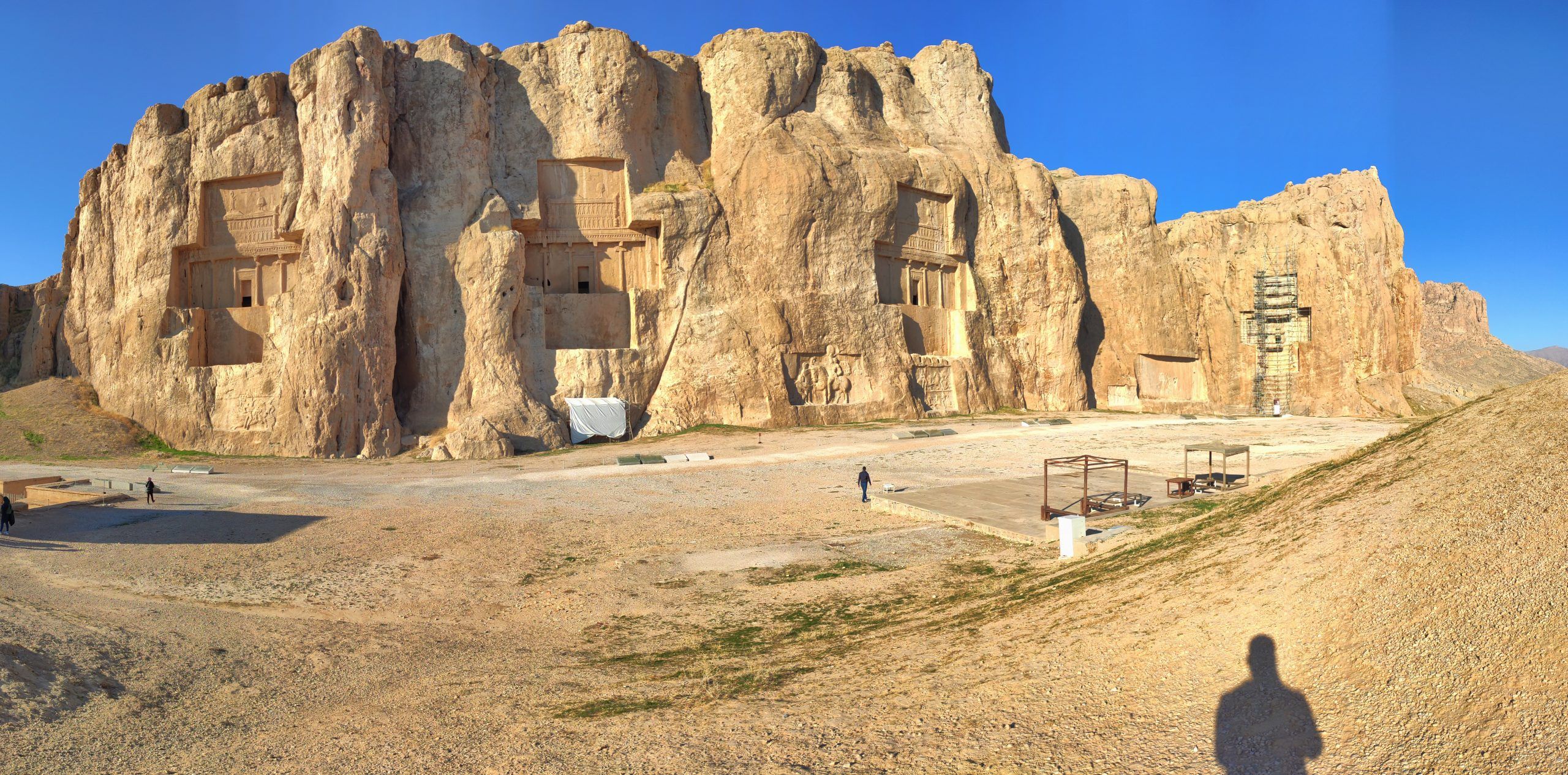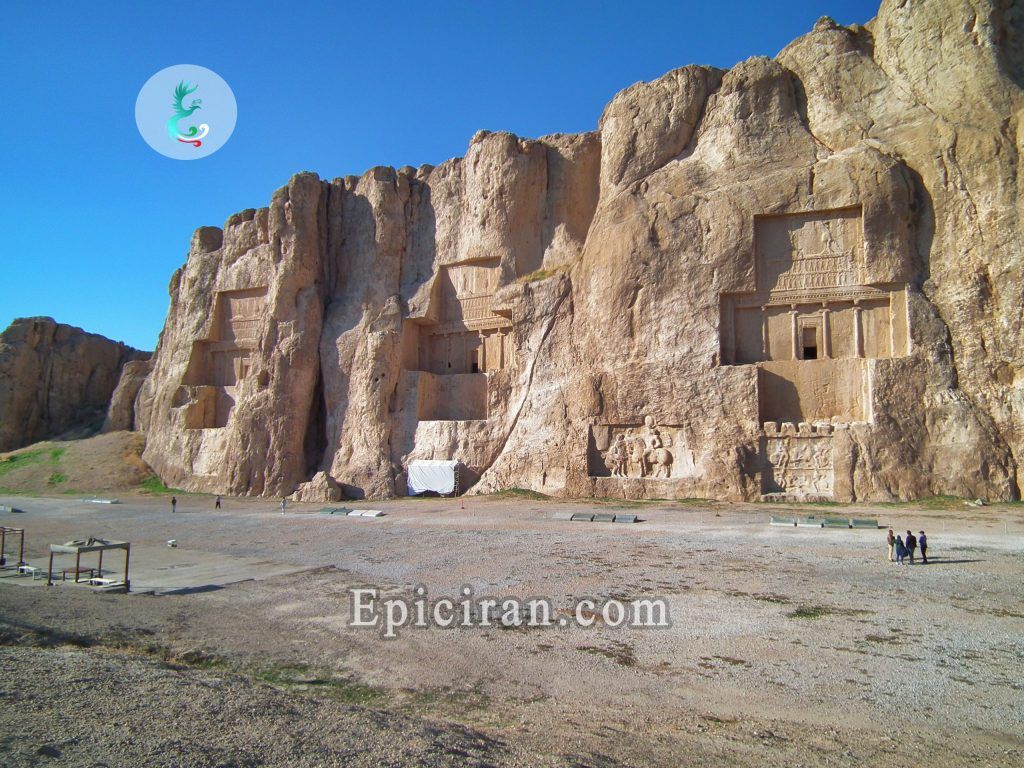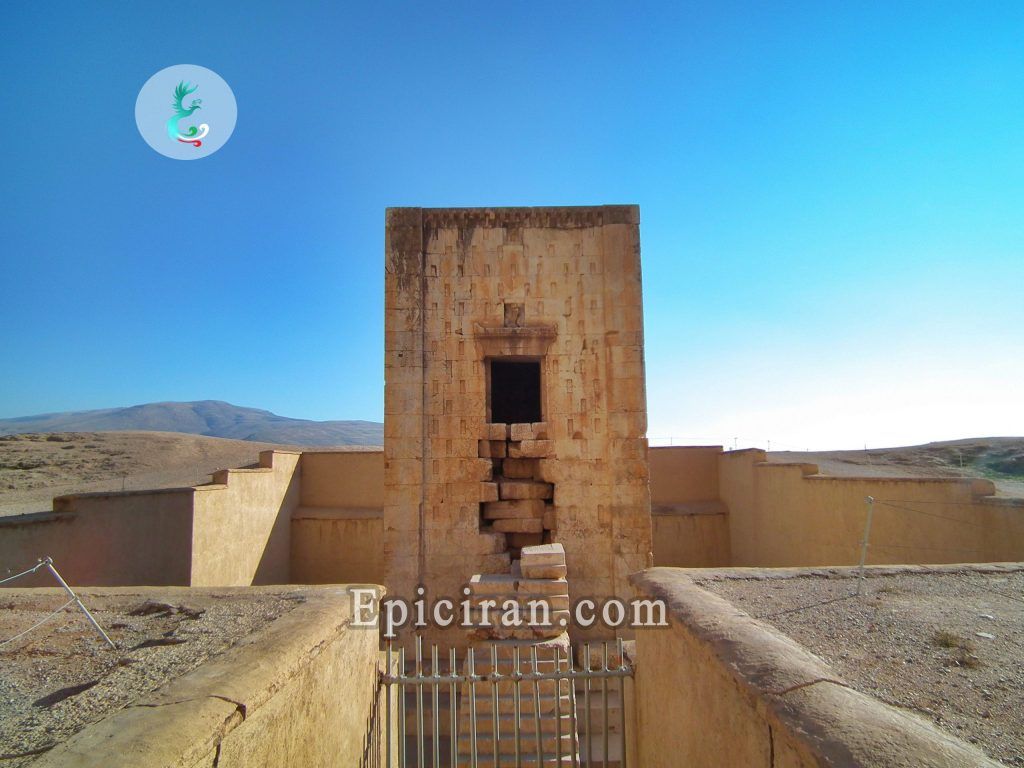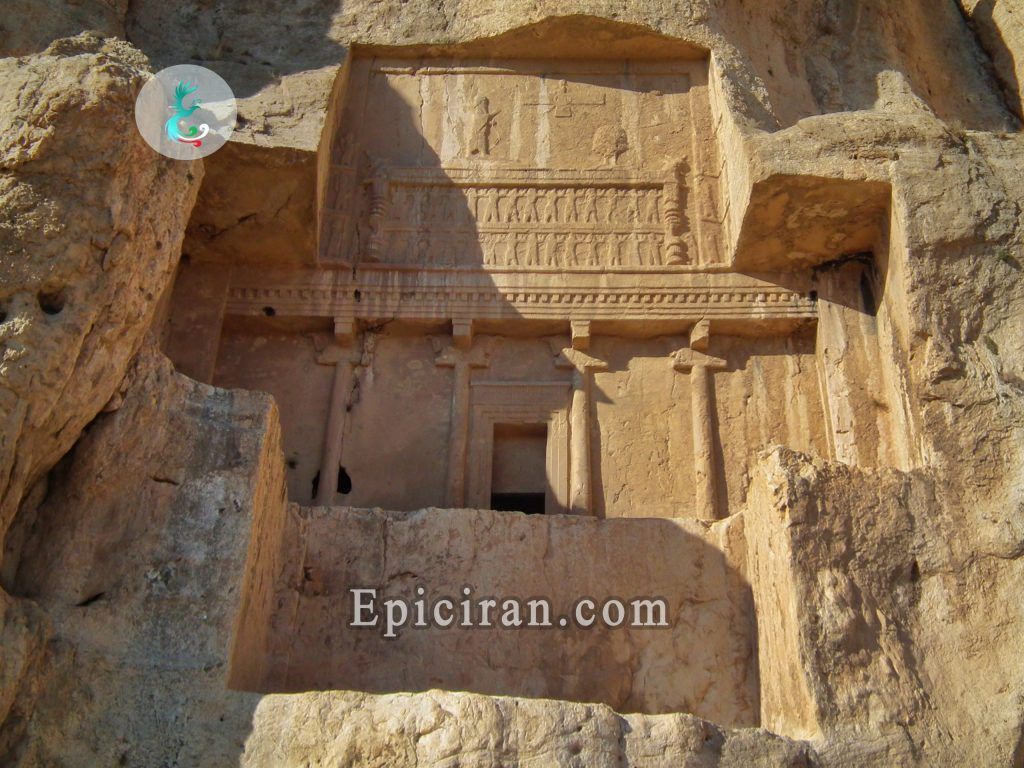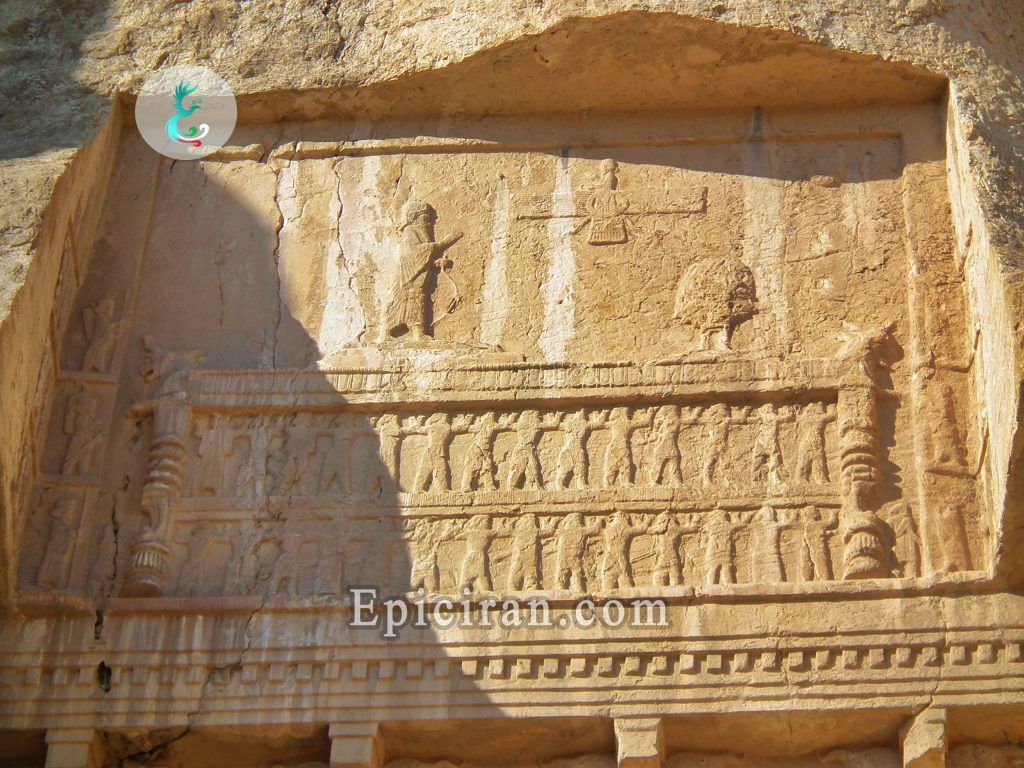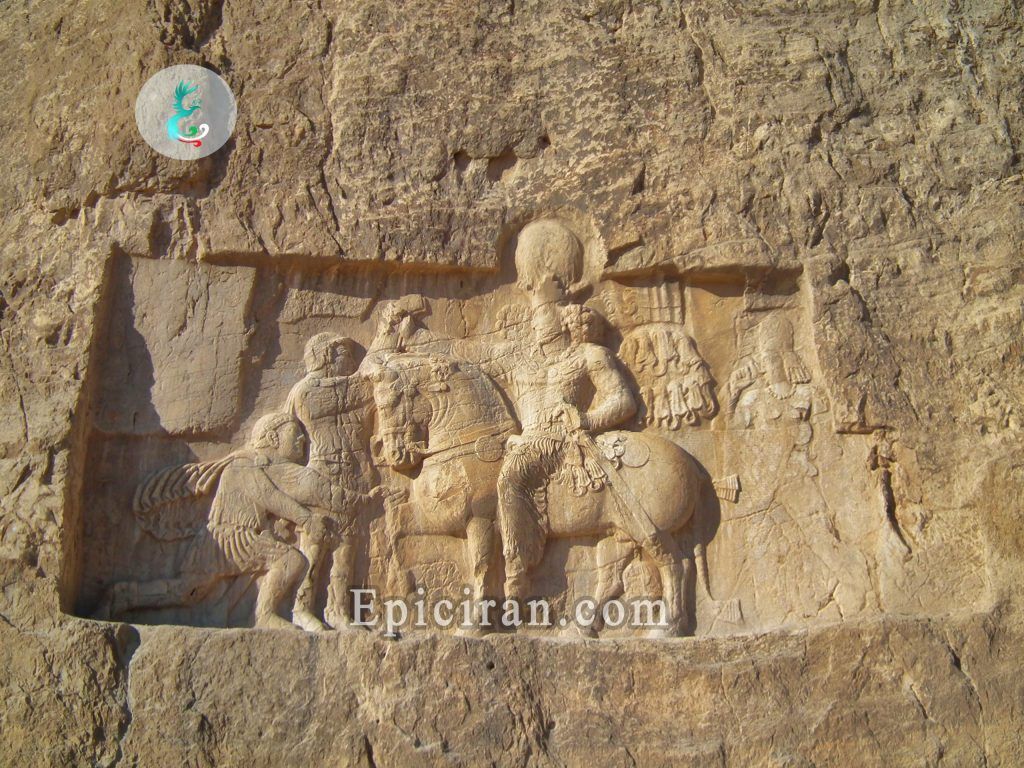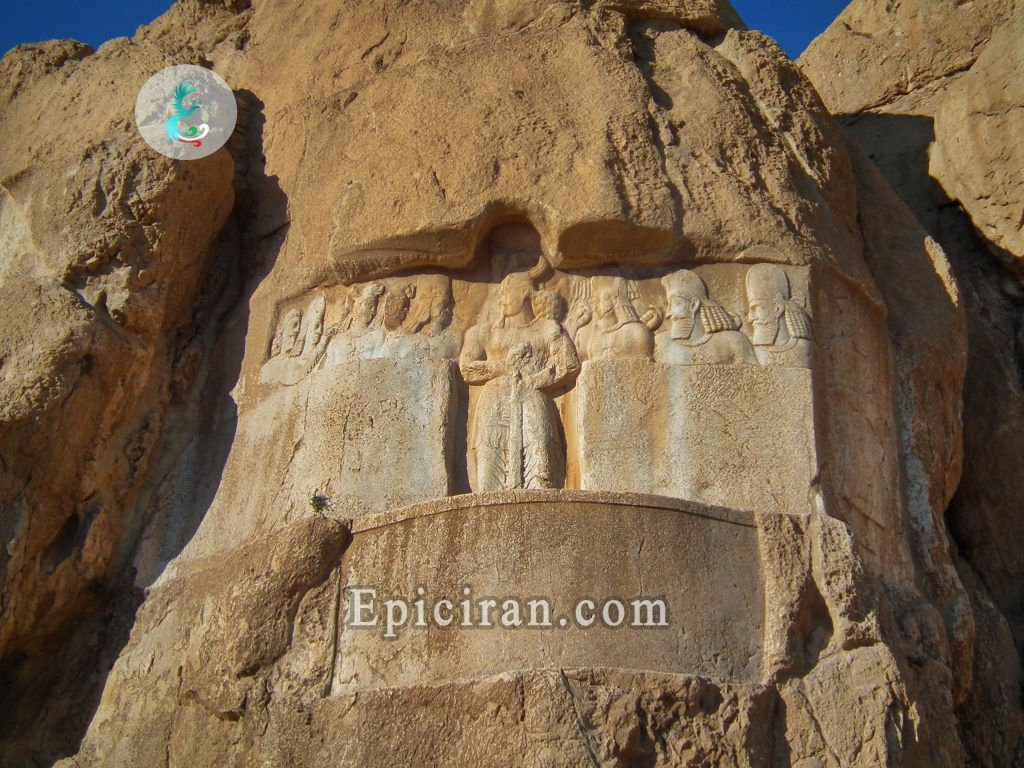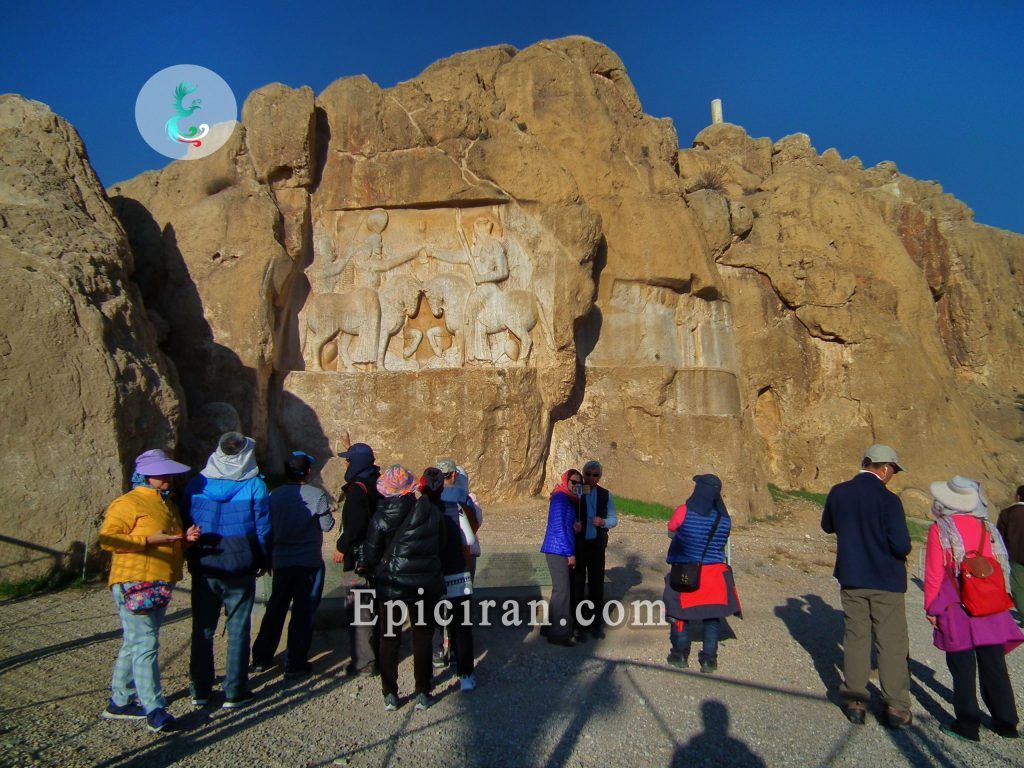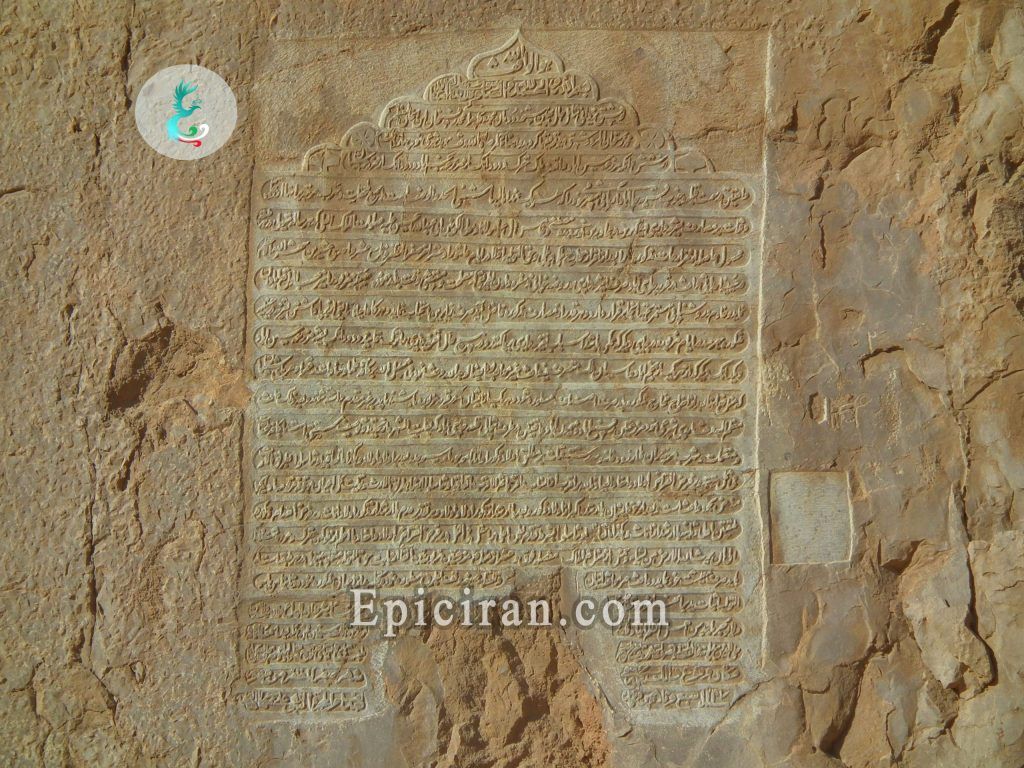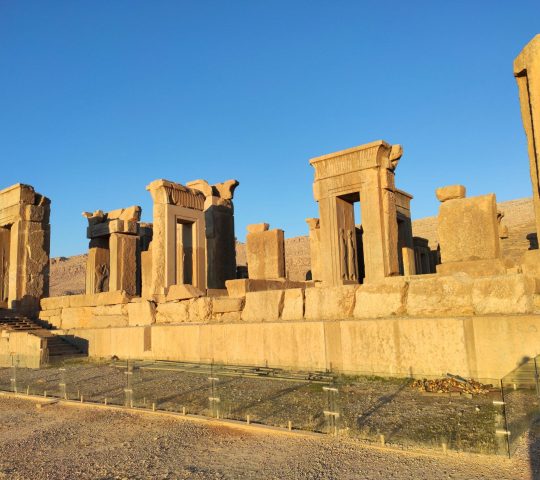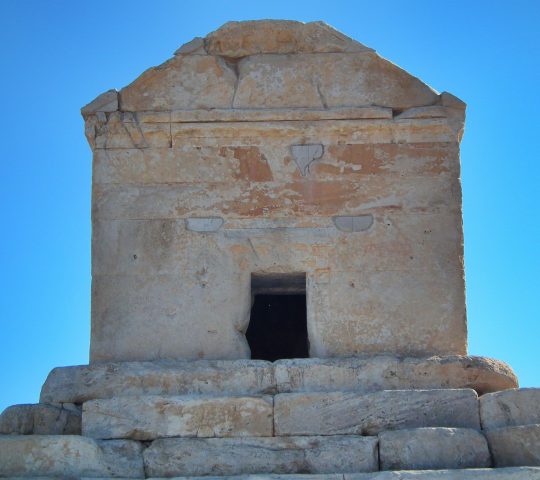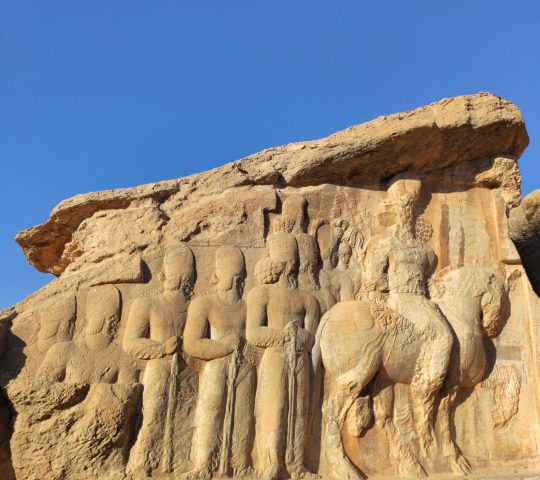Naqsh-e Rostam is a historical set in the vicinity of Persepolis and Naqsh-e Rajab, whose monuments and sculptors go back to the Elamite, Achaemenid, and Sasanian eras.
Elamite Sculptor in Naqsh-e Rostam
The most remarkable sculptor of Naqsh-e Rostam, regarding its antiquity, is the one belonging to the Elamite era. These embossed patterns are believed by the archaeologists to be engraved in two different Elamite periods, and their age is said to go back to about 600 BC and 1200 BC.
Achaemenid Monuments and Sculptors
The tombs of four Achaemenid kings are located in Naqsh-e Rostam: Darius the Great, Xerxes I, Darius I, and Ardashir I. The Tomb of Darius the Great can be pointed out as the most remarkable tomb among these four, which is built more than twenty meters above the surface of the earth, on a sixty-meter-high rock.
According to the archaeologists’ theory, Darius has started the building of his tomb at the same time as the construction of Persepolis, and it was finished years before his death. The sculptors at the entrance of the tomb are divided into four parts. The lower branch is polished to the utmost extent in order to make access to the tomb impossible, the two side branches in between which is set the gate of the tomb, are located between four engraved pillars, and, finally, the upper branch, which is the most important part, and in which Darius is wearing Persian garment, standing on a platform, while surrounded by the courtiers.
The Tomb of Xerxes I is located, with a little distance, in the vicinity of Darius’ tomb. A small room, an entrance gate, and a sculptor of Xerxes I, depicting him while he has risen his hands towards the gods, are the various parts of his tomb in Naqsh-e Rostam.
The Tomb of Ardashir I is widely similar to that of Darius the Great, regarding the manner of construction. However, the differences between these two tombs, are noticeable regarding exactness and beauty. In the lower part of this tomb is the sculptor of Hormizd I’s battle.
The Tomb of Darius I is located in front of the Kaaba of Zarathustra. This position is of course because the tombs are located at a determined distance from one another (about 37 meters).
The Kaaba of Zarathustra
The Kaaba of Zarathustra is another one of the Achaemenid monuments, which is remarkable for the fact that the archaeologists still have not been able to reach an agreement on the usage of this structure. There is a totally similar to the Kaaba of Zarathustra in Pasargadae, which is believed by some to be the tomb of Cambodia, Cyrus’ son. On the walls of the Kaaba of Zarathustra are two inscriptions, which refer to the defeat of the Roman emperor (Valerian) and his captivation by Shapur I in the Sassanian era.
The Monuments and Sculptors of the Sassanian Period in Naqsh-e Rostam
Sculptor of Ahura Mazda (Zoroastrian’s God) and Ardashir I is the oldest sculptor of the Sassanian era. This sculptor refers to the coronation of Ardashir I, the founder of the Sassanian dynasty, and the departure of Artabanus IV, the last ruler of the Parthian Empire.
The next sculptor in Naqsh-e Rostam that belongs to the Sassanian period is the sculptor of the triumph of Shapur I over and his captivating of Valerian, the Roman emperor. Shapur I was one of the powerful kings of the Sassanian dynasty, who conquered three Roman emperors, slayed Gordian III, made peace with Philip the Arab and he agreed on giving him taxes, and, finally, captivated Valerian and put him in the chain.
The sculptor of Bahram II and other courtiers is a sculptor belonging to the Sassanian period, in which the queen of Bahram II, Bahram III, Narseh (who succeeded Bahram III), and other courtiers can be seen.
As mentioned before, under the tomb of Darius the Great are two sculptors belonging to the victories of Bahram II and Bahram III over Roman emperors. The scene of Narseh’s coronation is another sculptor of Naqsh-e Rostam, in which Narseh is receiving the crown from Anahita, one of the goddesses of Zoroastrianism.
The sculptor of the victory of Hormizd II and Shapur II, and a carved, yet pattern-less surface, which probably belongs to the final years of Sasanian reign in Iran, are among other sculptors of Naqsh-e Rostam.

